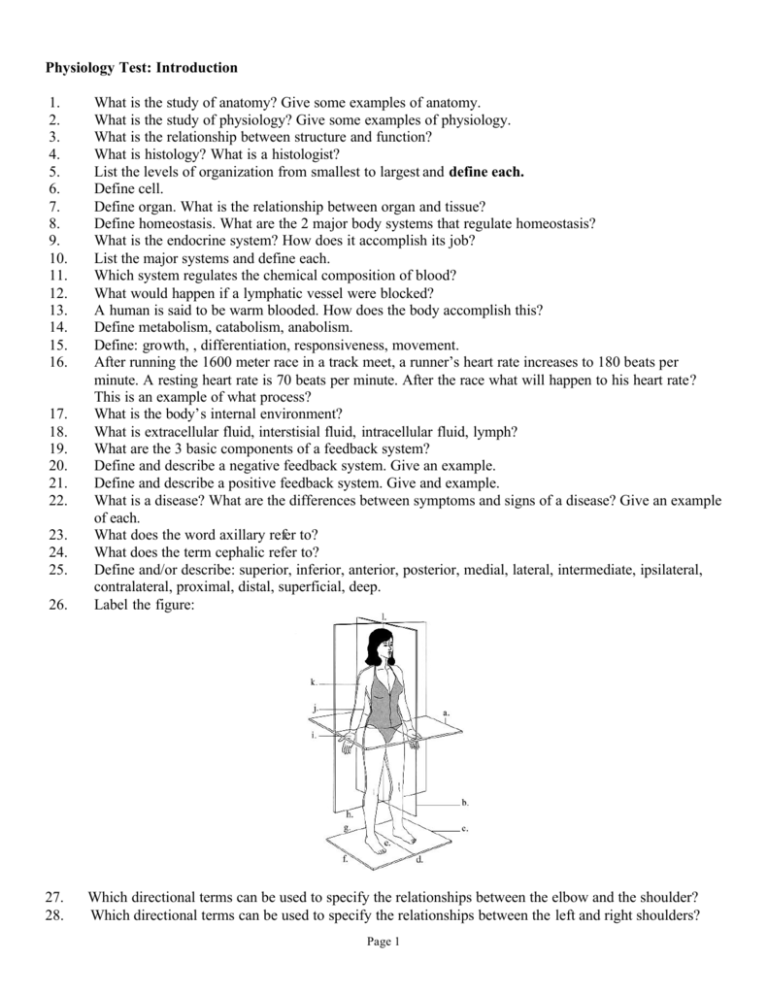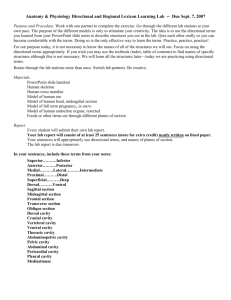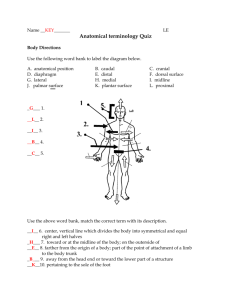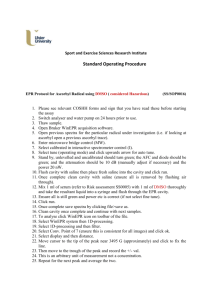Physiology Test: Introduction 1. What is the study of
advertisement

Physiology Test: Introduction 1. 2. 3. 4. 5. 6. 7. 8. 9. 10. 11. 12. 13. 14. 15. 16. 17. 18. 19. 20. 21. 22. 23. 24. 25. 26. 27. 28. What is the study of anatomy? Give some examples of anatomy. What is the study of physiology? Give some examples of physiology. What is the relationship between structure and function? What is histology? What is a histologist? List the levels of organization from smallest to largest and define each. Define cell. Define organ. What is the relationship between organ and tissue? Define homeostasis. What are the 2 major body systems that regulate homeostasis? What is the endocrine system? How does it accomplish its job? List the major systems and define each. Which system regulates the chemical composition of blood? What would happen if a lymphatic vessel were blocked? A human is said to be warm blooded. How does the body accomplish this? Define metabolism, catabolism, anabolism. Define: growth, , differentiation, responsiveness, movement. After running the 1600 meter race in a track meet, a runner’s heart rate increases to 180 beats per minute. A resting heart rate is 70 beats per minute. After the race what will happen to his heart rate? This is an example of what process? What is the body’s internal environment? What is extracellular fluid, interstisial fluid, intracellular fluid, lymph? What are the 3 basic components of a feedback system? Define and describe a negative feedback system. Give an example. Define and describe a positive feedback system. Give and example. What is a disease? What are the differences between symptoms and signs of a disease? Give an example of each. What does the word axillary refer to? What does the term cephalic refer to? Define and/or describe: superior, inferior, anterior, posterior, medial, lateral, intermediate, ipsilateral, contralateral, proximal, distal, superficial, deep. Label the figure: Which directional terms can be used to specify the relationships between the elbow and the shoulder? Which directional terms can be used to specify the relationships between the left and right shoulders? Page 1 29. 30. Which directional terms can be used to specify the relationships between the sternum and the humerus? Use the table to list the contents in each body cavity: Cavity Contents Cranial cavity Vertebral cavity Thoracic cavity Pleural cavity Pericardial cavity Mediastinum Abcominopelvic cavity Abdominal cavity Pelvic cavity 31. 32. 33. What lines the abdominal cavity? What lines the cranial cavity? What is a sonogram? What is another name for it? Page 2





![Lymphatic problems in Noonan syndrome Q[...]](http://s3.studylib.net/store/data/006913457_1-60bd539d3597312e3d11abf0a582d069-300x300.png)





